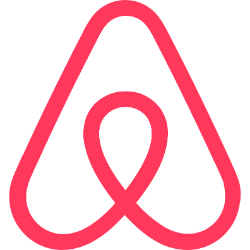Overall, Airbnb demonstrates strong business quality through its robust revenue growth, significant cash flow generation, and ongoing technological advancements. Future prospects remain promising due to a clear growth strategy and innovation plans, although short-term market sensitivities could pose challenges.
Analysis Date: February 13, 2025
Last Updated: March 11, 2025
Trailing Twelve Months (TTM) values provide a view of the company's performance over the last year.
Graham Value Metrics
Benjamin Graham's value investing approach focuses on finding stocks with a significant margin of safety between their intrinsic value and market price.
Intrinsic Value
Estimated fair value based on Graham's formula
$163.12
Current Market Price: $107.61
IV/P Ratio: 1.52x (>1.0 indicates undervalued)
Margin of Safety
Gap between intrinsic value and market price
34.0%
Graham recommended a minimum of 20-30% margin of safety
Higher values indicate a greater potential discount to fair value
ROE: 32.29465211293371
ROA: 2.1995324204399065
Gross Profit Margin: 77.47252747252747
Net Profit Margin: 23.851558277787785
Trailing Twelve Months (TTM) values provide a view of the company's performance over the last year.
Strong Return on Equity
ABNB's return on equity (ROE) is 32.29%, which is significantly above the industry average, indicating effective use of equity to generate profits.
Healthy Net Profit Margin
With a net profit margin of 23.85%, ABNB demonstrates strong profitability after all expenses have been accounted for.
No profitability weaknesses identified.
About Profitability Metrics
Profitability metrics measure a company's ability to generate earnings relative to its revenue, operating costs, and other relevant metrics. Higher values generally indicate better performance.
Return on Equity (ROE)
Measures how efficiently a company uses its equity to generate profits
32.29%
10%
15%
Higher values indicate better returns for shareholders
TTM (as of 2025-04-16)
Return on Assets (ROA)
Measures how efficiently a company uses its assets to generate profits
2.20%
3%
7%
Higher values indicate better asset utilization
TTM (as of 2025-04-16)
Gross Profit Margin
Percentage of revenue retained after accounting for cost of goods sold
77.47%
20%
40%
Higher values indicate better efficiency in production
TTM (as of 2025-04-16)
Net Profit Margin
Percentage of revenue retained after accounting for all expenses
23.85%
8%
15%
Higher values indicate better overall profitability
TTM (as of 2025-04-16)
Strong Liquidity Ratios
The current ratio of 1.69 and quick ratio of 1.69 indicate that ABNB is well-positioned to meet its short-term liabilities.
Low Debt to Assets Ratio
0.11
Debt to Assets Ratio
A debt to assets ratio of 0.11 suggests that the company has a low level of debt relative to its total assets, reinforcing financial stability.
Interest Coverage Ratio Issue
0.0
Interest Coverage Ratio
An interest coverage ratio of 0.0 indicates that the company currently does not have sufficient earnings to cover interest expenses, which raises concerns about financial stability.
About Financial Health Metrics
Financial health metrics assess a company's ability to meet its financial obligations and its overall financial stability.
Debt to Equity Ratio
Total debt divided by total equity
0.27x
1.0x
2.0x
Lower values indicate less financial leverage and risk
Less than 1.0 is conservative, 1.0-2.0 is moderate, >2.0 indicates high risk
Q4 2024
Current Ratio
Current assets divided by current liabilities
1.69x
1.0x
2.0x
Higher values indicate better short-term liquidity
Less than 1.0 is concerning, 1.0-2.0 is adequate, greater than 2.0 is good
Q4 2024


